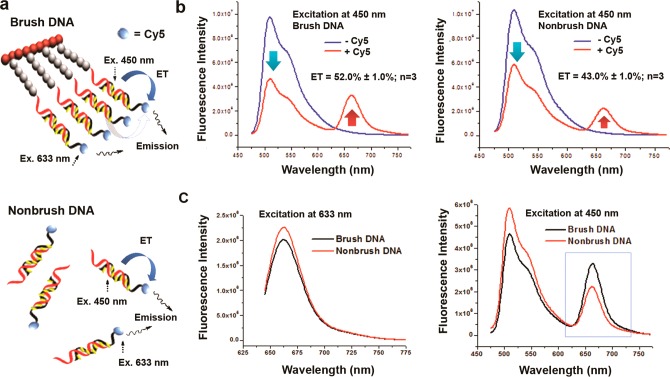Figure 2.
Wavelength shifting via energy transfer (ET). (a) Schematic of energy transfer pathways from intercalated YOYO-1 to terminal Cy5 acceptors. Both intra (blue) and inter (gray) duplex pathways are possible in a DBBP system, whereas only intraduplex ET is possible in nonbrush DNA. (b) Brush-immobilized DNA shows higher ET (left spectra) compared to nonbrush DNA in solution (right spectra). The red and blue traces correspond to DBBPs that include or exclude, respectively, covalent terminal Cy5 dyes on all the hybridized DNA strands. The ET is calculated based on the decrease in YOYO-1 fluorescence at 510 nm (cyan arrow); see Methods. (c) Comparison of brush (black curves) and nonbrush (red curves) DNA at different excitation wavelengths. Left spectra: Excitation at 633 nm (direct excitation of C5). Similar intensities indicate lack of self-quenching of Cy5 in brush. Right spectra: Excitation at 450 nm (excitation of YOYO-1). Higher Cy5 emission in brush is due to higher ET efficiency.

